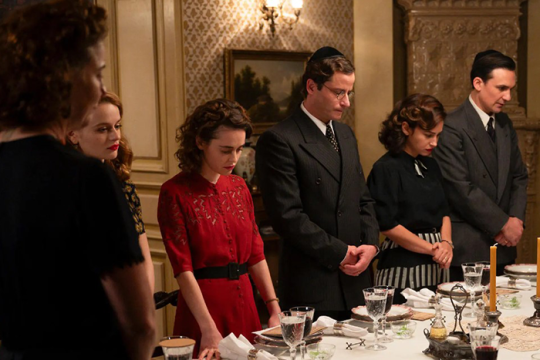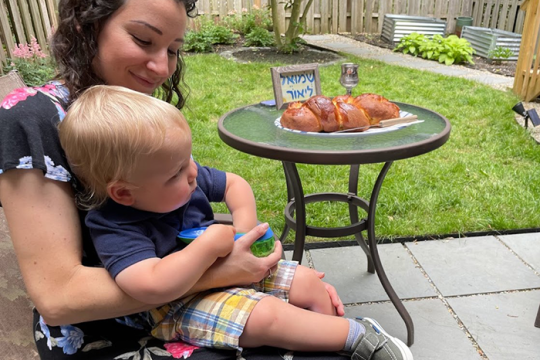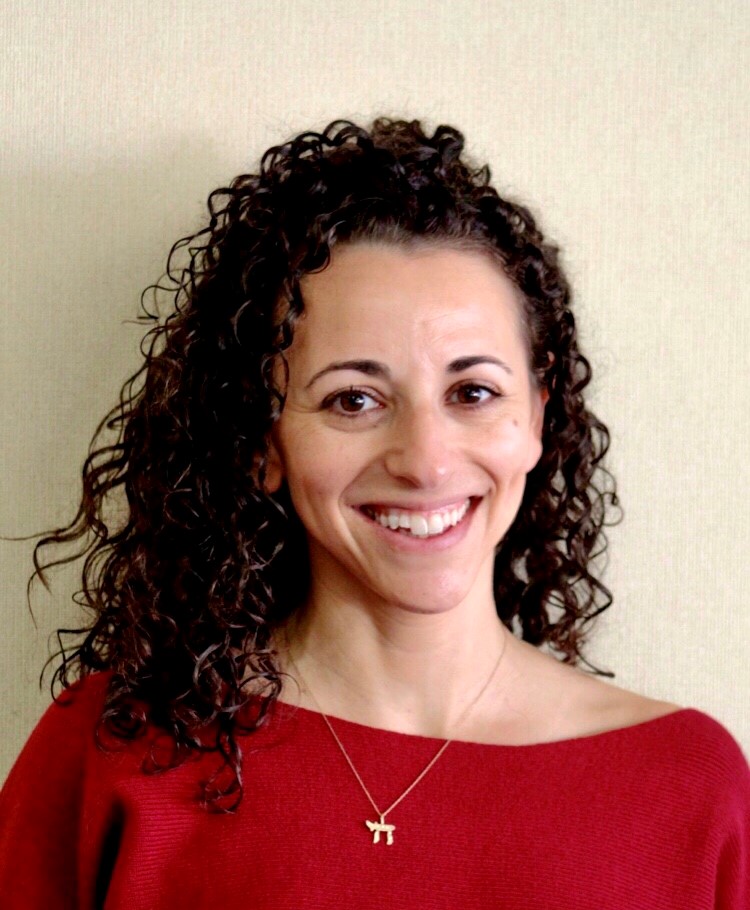
“Kids, before I loved your father, I was in love with a woman…”
“Kids, I want you to know that I wasn’t always heterosexual. I mean, I’m still not heterosexual, but…”
“Judah, Niva, before you were born, there was a time when mommy thought her future kids would have two mommies…”
None of these openers rolls off the tongue, nor do any seem totally digestible for my 4- and 6-year-old children – yet, these are some of the ways I’ve tried to explain my sexuality to them.
Some people may think it inappropriate to discuss sexuality with young children or that this particular conversation is a bit much – but in reality, society is “talking” to our children all the time about issues of sexuality, gender, and race.
Thinking back to my childhood, my own parents divorced when I was 3 years old; addiction and economic issues plagued our seemingly messy family. As a result, I grew up feeling like an outcast among my Jewish day school peers – all because our society regularly and consistently normalizes and “de-normalizes” certain familial structures.
Now that I’m a parent, teaching my children about racism, classism, and homophobia is as important to me as teaching them about their 5,000-year-old Jewish heritage. If my children do not grow up with both deep pride in their Jewish identity and an awareness of society’s systemic oppression, I will feel I have failed in my responsibilities as a parent.
In our North American Jewish communities, heterosexual, Ashkenazi, white, middle class, two-parent homes are widely visible, celebrated, and considered the most “normal” of Jewish family structures. Messages in our media, schools, and synagogues normalize Ashkenazi Jews, heterosexual relationships, and two-parent households; conversely, then, Jewish families of color, single-parent households, and same-sex-headed families are seen as unusual in our Jewish communities.
Society in general, normalizes such structures of heterosexuality and whiteness – again and again, in so many ways. These structures dictate how women and men should behave, dress, and work; they dictate not only our own behaviors but also our expectations of others, based solely on their gender, race, or other structures.
As a parent, I feel compelled to de-centralize these identities and am responsible for normalizing non-dominant identities for my children.
I need my kids to know that our white, seemingly heteronormative family (along with those they see primarily reflected in the media) are not the norm – or at least not the only norm – and that other family structures, races, and identities are of equal existence and value. I need them to know, too, that our Jewish communities will not be whole until we fully recognize, value, and incorporate people of all backgrounds within our midst.
I am challenged, then, to teach my children about diverse kinds of love even while raising them in a heteronormative household. That’s why I want them to know and understand that my life looked different before I stood under the chuppah (wedding canopy) with their father, my life partner. I want them to know that when, at 21, I fell in love with a woman, I presumed it was with her that I would have a family.
But where to begin?
It starts with the recognition that our children watch our every move; they see who our friends are, where we spend our money, and how we treat others. They hear our words – not only the ones we ask them to listen to, but also the ones we say when we think they’re not listening.
For instance, when he couldn’t get a toy to work properly, my son yelled out in frustration, “For the love of God!” (Oops!) I remember, too, attending an MLK Day event where that same 5-year-old boy, unprompted, stood up in front of an audience of 120 people and, in his own words, talked openly about bus segregation and racism.
While it’s incumbent upon us, as parents, to be careful and cognizant of our own words, truly teaching our kids these lessons is not always easy, natural, or organic; it takes effort.
To teach our children the importance of fostering a diverse, inclusive, and equitable community means we often have to go out of our way to create that community, embracing the discomfort that comes with the effort. De-centralizing our advantaged and normalized identities is not easy – and yet, people of color, the LGBTQ+ community, and working-class people do so daily, simply to go to work, school, and places of worship.
It’s no coincidence or accident, then, that I have a diverse group of friends and attend events where my white children are in the minority and English isn’t always the first language spoken. It also means that I value friendships with families of diverse makeup and size, much like the way I was raised. And even in my attempt to create a multicultural life, due to historical and present-day segregation, as well as my own white privilege, I still have to consciously reach beyond my comfort zone – beyond my local neighborhood and my own “convenient” friendships – in attempt to raise a family with a deep appreciation for and understanding of the necessity for a diverse community and diverse cultural norms.
I want my family to know that our community is not kehillah kedosha, (holy community) until we are all here.
We can’t teach inclusivity in a vacuum of segregation or with a lack of intimacy, and we can’t love what we don’t know see, touch, hear, smell, or experience. Instead, we must play, cook, laugh, debate, sing, and fully connect with those who are different from us. Only then will we move from simply tolerating diversity to incorporating it fully into our own lives.
Related Posts

“We Were the Lucky Ones:” Bringing The Holocaust Out of History Books and Into Our Homes

Harnessing the Power of our Mothers Around the Seder Table


